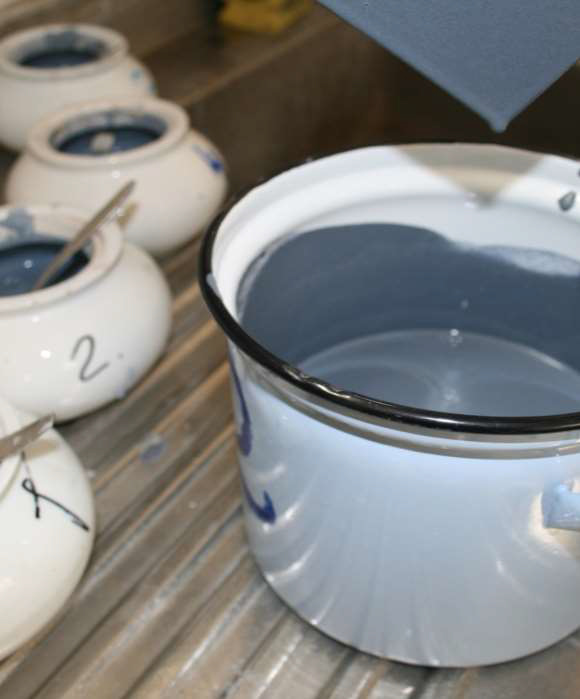Fluidity And Yield of Enamel Slurry
Fluidity refers to the performance of whether the enamel slurry can be evenly coated on the metal body. Typical coating methods such as dipping, electrophoresis, spraying, etc. have different requirements for the fluidity of the enamel slurry. There are many factors that affect the fluidity of the enamel slurry. In addition to the amount of grinding additives during the grinding of the enamel frit, the composition of the clay, the type of the enamel glaze and the degree of melting also have a great relationship.

Yield property refers to the ability of the enamel slurry to resist external forces (such as gravity and vibration during transmission) without rheology. To ensure the uniformity of the enamel slurry after enameling, the enamel slurry must have a certain yield value. The clay suspension is a non-Newtonian fluid, and the enamel slurry is a plastic fluid. The characteristic of plastic flow is that the applied shear force must exceed a certain minimum value (that is, the yield value) before it starts to flow. The yield value of the enamel slurry has a certain relationship with the thixotropic properties and consistency of the enamel slurry.
Choosing high-quality clay or increasing the amount of clay, choosing the type of staying agent and the best value of the amount of staying agent can increase the yield value of the enamel slurry. Increasing the amount of water added will increase the fluidity of the enamel slurry and reduce the yield value.
The rheology of enamel slurry directly affects the surface quality of enamel products. No matter what process is used for enamelling, the process performance of the enamel slurry must be optimized, and the rheology and yield value of the enamel slurry must be controlled in an optimal range.
The bulk density of the enamel slurry not only affects the enamelling operation, but also has a great influence on the internal quality and appearance of the product. If the enamel slurry is too thin and the bulk density is small, the coating of the enamel slurry will be thin, the ground coat is easy to burn, the adhesion strength will be poor, and it may cause porcelain explosion; the cover coat will have poor hiding power and expose the ground coat. If the enamel slurry is too thick and the bulk density is too large, it will thicken the coating and cause insufficient firing. The ground coat will boil, the adhesion strength is poor, and the porcelain will burst; the cover coat is easy to be unevenly coated and cannot be fired. Causes poor gloss, rough porcelain surface, and lower temperature resistance.
The fluidity of the enamel slurry is too large. When applying the enamel, the enamel slurry will drip down, which will cause the coating thickness to be uneven, the ground coat is easy to burn, the top coat is flooded and other defects; the fluidity is too small, which makes it difficult to apply the enamel. , The enamel layer is thickened, which leads to the decrease of some physical and chemical properties of enamel products.